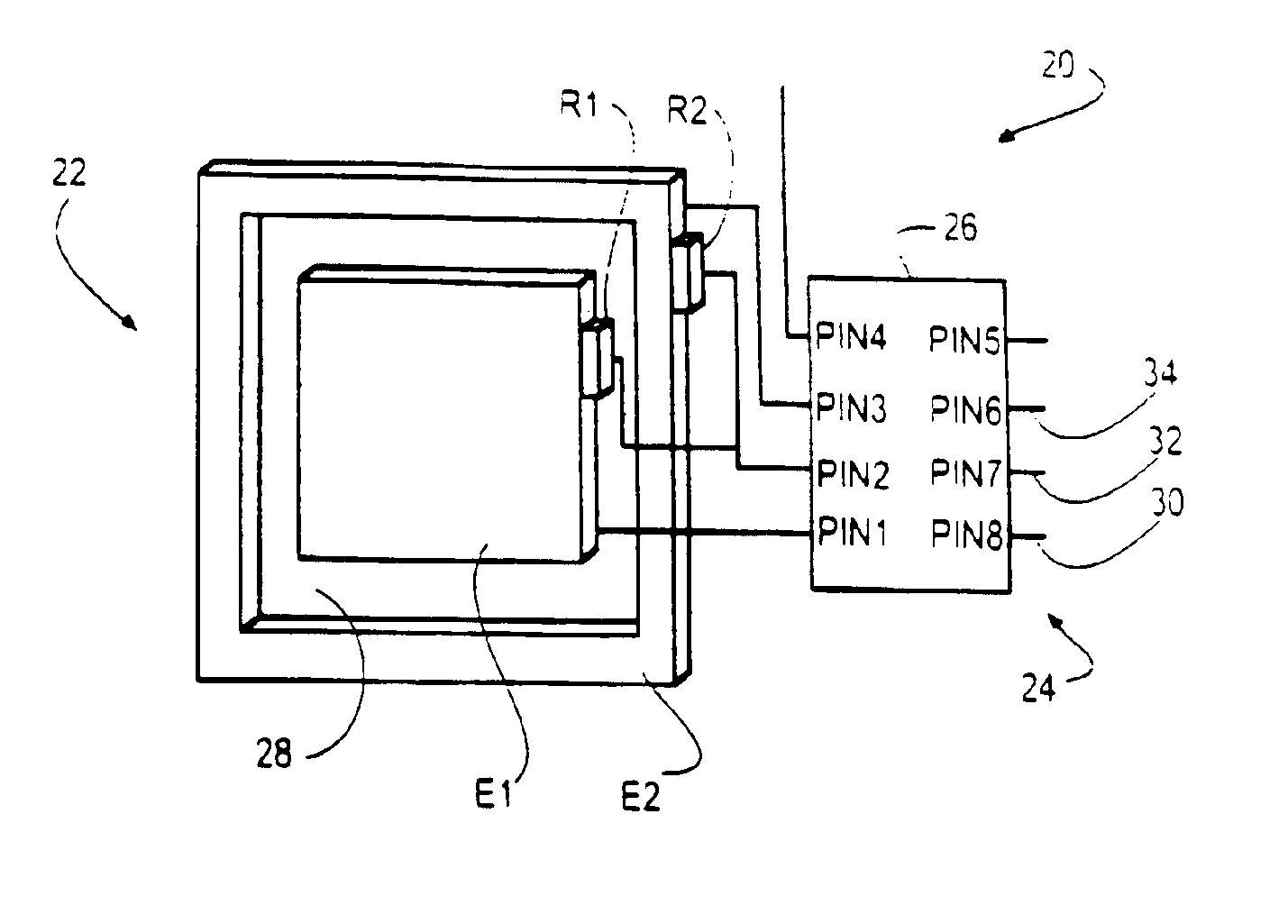Touch switch with integral control circuit
a control circuit and touch switch technology, applied in the field of touch switch, can solve the problems of unsatisfactory known touch switch design, circuits which are often complicated and remote from the touch pad, and unintended switch actuation, and achieve the effect of preventing unintended switch actuation
- Summary
- Abstract
- Description
- Claims
- Application Information
AI Technical Summary
Benefits of technology
Problems solved by technology
Method used
Image
Examples
Embodiment Construction
[0042]The invention pertains to a touch switch apparatus comprising a touch pad having one or more electrodes and a control circuit. Many of the drawing figures illustrating the control circuit depict the circuit as large in relation to the touch pad, for clarity. In typical applications, however, the control circuit may be small compared to the touch pad, and is preferably in the form of one or more integrated circuit chips.
[0043]FIG. 1 is a perspective representation of one preferred embodiment of a touch switch apparatus 20 of the present invention. Touch switch apparatus 20 comprises a touch pad 22, a control circuit 24 comprising an integrated circuit (IC) chip 26 having eight output terminals PIN1-PIN8, and first and second resistors R1 and R2. In the embodiment shown, touch pad 22 comprises a first electrode E1 and a second electrode E2, although the touch pad may also be comprised of more or fewer than two electrodes. Although control circuit 24 could be fabricated using dis...
PUM
 Login to View More
Login to View More Abstract
Description
Claims
Application Information
 Login to View More
Login to View More - R&D
- Intellectual Property
- Life Sciences
- Materials
- Tech Scout
- Unparalleled Data Quality
- Higher Quality Content
- 60% Fewer Hallucinations
Browse by: Latest US Patents, China's latest patents, Technical Efficacy Thesaurus, Application Domain, Technology Topic, Popular Technical Reports.
© 2025 PatSnap. All rights reserved.Legal|Privacy policy|Modern Slavery Act Transparency Statement|Sitemap|About US| Contact US: help@patsnap.com



